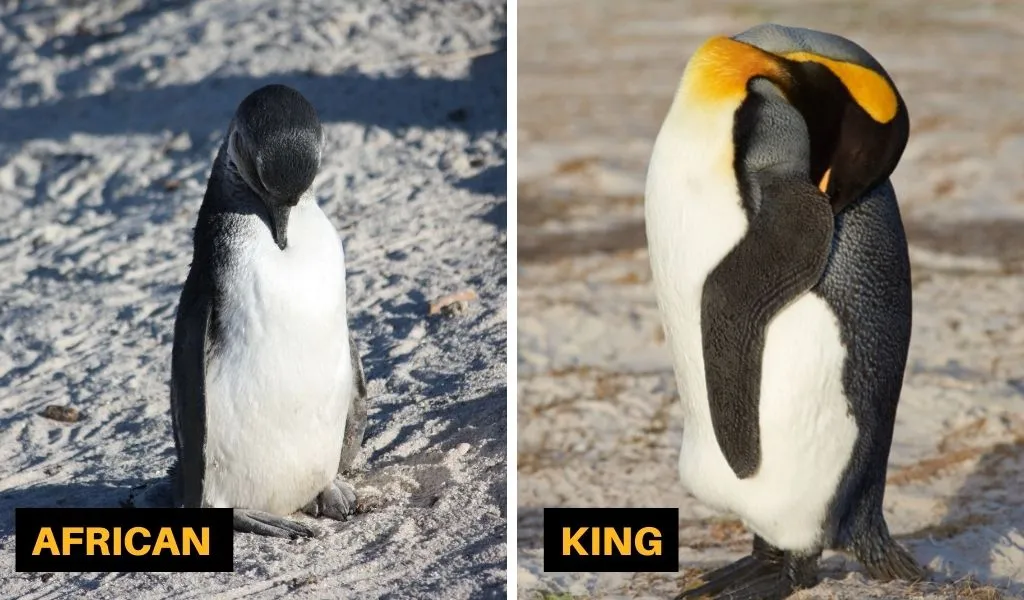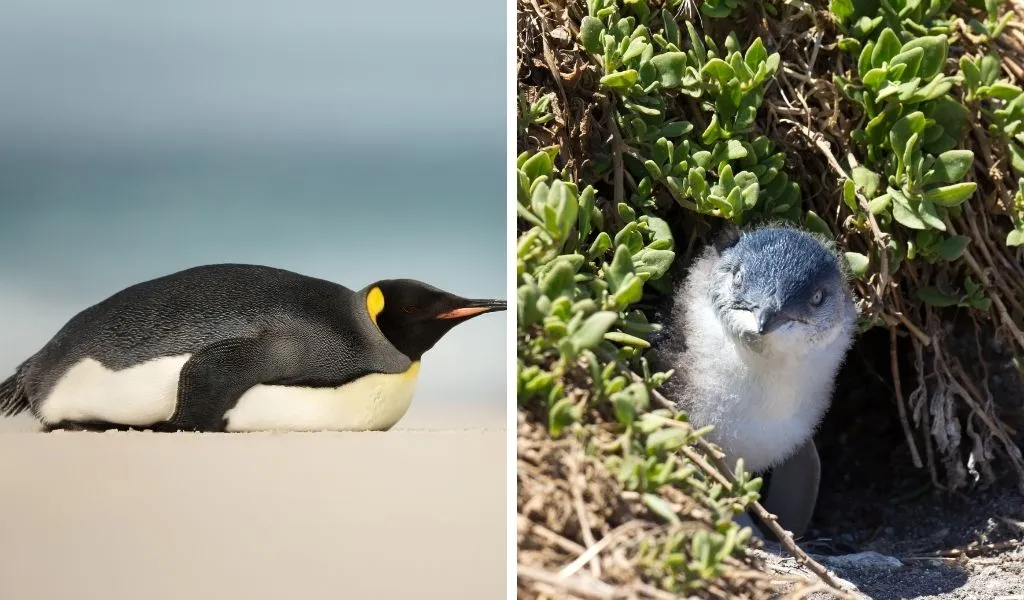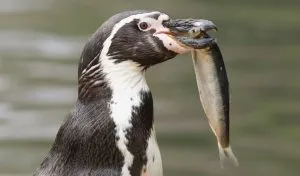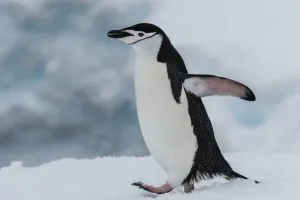Penguins are well-known for their adorable appearance as they waddle around on the Antarctic ice. However, most people aren’t familiar with their sleeping behavior and they certainly don’t lie down with a pillow-like us humans. So, how do penguins sleep?
Penguins get their sleep in the form of many small naps throughout the day and night, typically less than 10 minutes at a time. They can sleep standing up on land with their beak tucked into their flipper or they can sleep in the water where they spend most of their time.
Keep reading to find out more about penguins’ sleeping habits including why they might sleep with one eye open.
Are Penguins Nocturnal?
No, most penguins are neither nocturnal nor diurnal, they are cathemeral which means they can be irregularly active at day or night1 (source: Oxford University Press). Essentially, they get some sleep whenever they can but it depends on many environmental factors such as predators and prey availability.
However, the Little Penguin that is found in Australia and New Zealand is the exception and is the only species that is nocturnal on land. They always arrive after dusk and leave before dawn2 (source: IUCN).
Remember, many penguin species inhabit Antarctica and the surrounding sub-Antarctic islands where they have polar nights and midnight sun seasons of the year when the sun does not rise or set for many days, weeks, or months at a time depending upon how close to the south pole they are.
How Long Do Penguins Sleep?
Sleep patterns in animals can generally be classed as monophasic or polyphasic. Humans are monophasic which means they get the majority of their sleep in one block, at night. On the other hand, polyphasic is where an animal gets its sleep in many smaller blocks.
Penguins are polyphasic, which means they get their sleep as many smaller naps, usually less than 10 minutes, throughout the day and night.
A study of Emperor Penguins in their natural habitat found that they spend 10.7 hours sleeping during a 24 hour day with the average length of each sleep period being around 4 – 7.5 minutes.
There have also been studies of Little Penguins and Galapagos Penguins which found they slept for 8.3 hours and 12.8 hours per day respectively. Although these were more controlled studies where day and night were recreated by researchers3 (source: S.S. Campbell and I Tobler, Neuroscience & Biobehavioral Reviews, Vol 8, Issue 3, 1984).
During the ‘penguin parade’ where Little Penguins walk from the sea to their burrows around sunset, they could also be seen taking short rests every 20-50m with some taking brief naps of usually around four minutes4 (source: A. Chiaradia, Little Penguins: creatures of the night, 2001).
In comparison to demonstrate differences between penguin species, research has shown whilst some take their naps at any time during the 24 hours of the day, a study of King Penguins found that they sleep more deeply in the afternoon after lunch, this is likely due to the higher chance of being disturbed by the activity of their fellow penguins in the morning when penguins are most active5 (source: G. Dewasmes & N. Loos, Polar Biology, Vol. 25, 2002).
Where Do Penguins Sleep?
Penguins can sleep on land or at sea, this is vital since they can spend as much as 75% of their daily lives in the water and several months at a time when they aren’t breeding6 (source: S. Moss, Do Birds Have Knees, 2016). They often sleep in groups for both warmth and protection from predators.
Most penguins sleep standing up whilst on land, usually with their beak tucked behind one of their flippers7 (source: G. Dewasmes, et al., American Journal of Physiology-Regulatory, Integrative and Comparative Physiology, Vol 256:2, 1989). They also sleep standing up as this minimizes the amount of body contact with the cold surface but scientists are still unaware of any reason behind why some penguins tuck their beak in when they sleep8 (source: Seaworld).

Some species that have their own sleeping habits:
- Some King Penguins sleep horizontally when they aren’t on the Antarctic ice, often giving them a muddy chest9 (source: B. Stonehouse, Nature, Vol. 178, 1956).
- Little Penguins are the only nocturnal penguin on land, they tend to sleep in burrows during the day which protects them from the heat of New Zealand and Australia where they are found10 (source: A. Chiaradia, Little Penguins: creatures of the night, 2001).
- African Penguins may also sleep in burrows which they dig in sand or guano (penguin poop) as these have a more consistent microclimate than surface nests.

How Do Penguins Sleep?
Penguins use both sight and sound to stay safe while they sleep. Whilst sleeping, penguins can distinguish the sounds of their predators to stay aware of incoming threats. This is because they only rest half of their brain at a time, leaving the other half alert. This is known as uni-hemispheric slow-wave sleep and is common amongst birds.
Researchers played different sounds to sleeping King Penguins and found that they had little reaction to single tones but would wake up and flee when they heard the calls of predators such as orcas and skuas11 (source: Phys.org).
One of our favorite penguin facts is that some species, such as the Humboldt Penguin, sleep with one eye open. This is known as unilateral eye closure and allows them to keep an eye out for approaching predators while they sleep12 (source: N. Rattenborg, Neuroscience & Biobehavioral Reviews, Vol 24, Issue 8, 2000).
Again, this is related to the fact that they only sleep with half of their brain. Other birds that sleep with one eye open include parrots and ducks, although it’s a technique also used by some mammals such as whales and porpoises.
How Do Penguins Sleep At Sea?
Penguins can sleep at sea whilst floating in the water because their fat makes them very buoyant. Whilst they are sleeping, the countershading of their feathers provides camouflage to protect them from predators. From beneath, their white bellies blend with the light that shines down from the surface above, whilst from above, their black backs blend in with the darkness from the deep water below.
Learn more about this and the other color techniques of penguins in our full article on what color are penguins.
Do Penguins Hunt at Night?
Penguins are carnivores and they rely on visual sight to hunt prey so most species of penguins hunt during the day.
However, other species, such as Adelie, Macaroni and King Penguins, will forage at night, despite several studies showing that Penguins catch less prey at night13 (source: J.K. Ransen, Marine Ecology Press Series, Vol. 165, 1998) 14(source: D. Rodary, et al., Polar Biology, Vol. 23, 2000).
King Penguins have a unique eye among birds, in bright light their pupil contracts to a small square-shaped pinhole, but in darkness, they become wide and circular to detect almost 300 times as much light. This is how they can forage at such deep depths in the ocean, even at night15 (source: G.R. Martin, Ibis, Vol. 144, 1999).
However, a penguin’s hunting behaviour is still limited by the amount of light, which is why all species can perform deeper dives during the day than at night. As an example, Macaroni Penguins dive an average of 15-60m during the day but only 3-6m at night16 (source: P.D. Boersma and P.G. Borboroglu, Penguins: Natural History and Conservation, 2013).
Related Questions
Do Penguins Sleep With Their Eyes Open?
Yes, some penguin species are known to sleep with one eye open to keep watch for predators. This is a common trait among many different birds and mammals, including bottlenose dolphins, South American sea lions, blackbirds, and peregrine falcons.
Do Penguins Sleep Standing Up?
Yes, whilst on land, penguins can sleep standing up. This is common among Antarctic penguins as it reduces their body contact with the cold surface. However, some penguins sleep on their belly or in burrows.
Do Penguins Live In Igloos?
No, penguins do not live in igloos. Igloos are man-made structures using blocks of ice, penguins do not have hands so they would not be able to build these. Additionally, igloos are made by indigenous people who live in the northern Arctic whereas penguins live in the southern hemisphere.

![You are currently viewing Are Penguins Nocturnal? [Where + How They Sleep]](https://polarguidebook.com/wp-content/uploads/2022/01/Sleeping-Penguins.jpg)

![Read more about the article 17 Ice-Cool Emperor Penguin Facts [#13 Will Melt Your Heart]](https://polarguidebook.com/wp-content/uploads/2023/01/Emperor-Penguins-Featured-Image-300x200.jpg)
